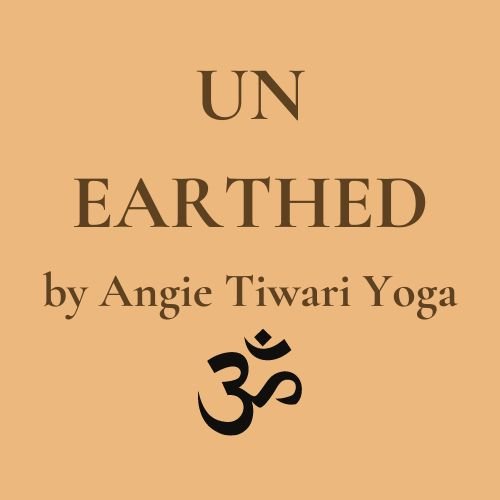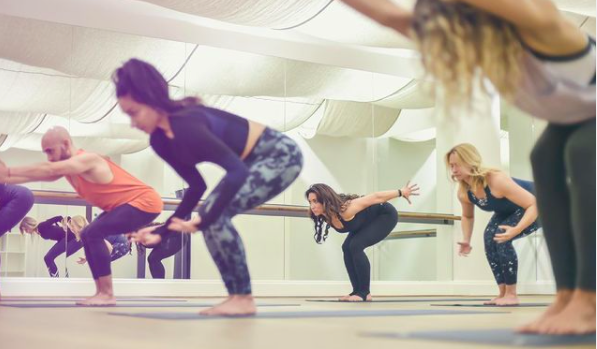Decoding The Different Styles Of Yoga
There are so many different styles of yoga, especially in the physical practice, that it can often feel confusing. Which one is for you? What style do you like? What does each one offer? In this piece I hope to break down some of these styles for you so you have a greater understanding of what to expect and can feel more confident in your practice. Because yoga is such a huge subject, I really recommend trying a few different styles out before completely ruling it out of your life. I had a love / hate relationship with yoga for about 5 years before having a break through moment. In that time I explored a number of styles and countless teachers to find what suited me best.
Ashtanga Yoga
Ashtanga yoga literally translates from the Sanskrit as the 8 limbs of yoga. These 8 limbs are broken down as per Patanjali's yoga sutras as the yamas (5 morals we abide by), niyamas (5 things to observe), asana (postures), pranayama (breathing techniques), pratyahara (sense withdrawal), dharana (concentration), dhyana (meditation), and samadhi (self realisation). The Ashtanga movement based practice is the OG to your vinyasa, power and rocket styles and sticks to a set sequence within the six series that it's made up of starting with primary, intermediate and four advanced series). This is the style of yoga I trained in India just over 5 years ago. It hugely helps with discipline and is great for those who like to know a sequence and stick with it.
It is said that the first time ashtanga yoga was written about was in a text known as the Yoga Korunta in 200 B.C.E. and 250 C.E written by Patanjali who also wrote the well known text, the yoga sutras. Some depictions of Patanjali show him as half man half snake and it is unknown as to whether he was one person, or a group of people collating yogi and ancient sages thoughts. Sri Krishnamacharya started sharing the practice more and in the 1930s took on students including Iyengar and Pattabhi Jois. In 1948, the Ashtanga Yoga Research Institute was founded by Jois in Mysore (India) and many that trained with them then went on to open their own Ashtanga Yoga schools across the world. Mysore is the place to go if you want to learn ashtanga yoga. Each of the six series begin with surya namaskar (surya = sun, namaskar = hello/salutations) A and B. This sequence works through the whole body, strengthening, lengthening and aligning. With the physical benefits also comes the mental clarity and focus the yoga brings.
Bhakti Yoga
Bhakti translates from the Sanskrit as ‘attachment/faith/workshop’ and it is known as the yoga of devotion. In a Bhakti practice you can expect chanting, devotional practices such as lighting incense, folding your hands in prayer (also known as anjali mudra, the gesture of offering) and you could practice by attending a kirtan. If you attended a Bhakti yoga practice you wouldn’t be rolling out your mats and moving through a physical flow. However, that is not to say that you cannot bring devotion to your physical practice - you absolutely can! The word kirtan derives from the Sanskrit root to recite. Though kirtans are often depicted as joyous occasions in celebration and dancing, the first kirtan I went to was the death anniversary of my Uncle. A kirtan is simply a place to join together as a community, be connected by the healing vibrations of music and chant together.
Hatha Yoga
Hatha, pronounced ‘ha-tah’, breaks down into 2 parts, ‘ha’ meaning ‘sun’ and ‘tha’ meaning ‘moon’. It’s a movement based practice with the intention to balance the left side of our bodies, that represents the lunar or moon energy, with the right side of our bodies, that represents the solar or sun energy. It is a movement based practice that incorporates breath. It’s faster than restorative yoga or yin yoga, but not as dynamic as an ashtanga, jivamukti, power or rocket yoga class. About 90% of diseases and illnesses are caused by, and exacerbated by stress and there’s numerous evidence showing how yoga not only releases that stress, but also boosts our immunity. Practising hatha yoga will detoxify you, help you be more in the present moment therefore improving your focus, and memory, while also helping you reset your nervous system for overall positive mental and physical wellbeing.
Increasingly more and more studies are showcasing what the ancient Indian yogis knew centuries ago about the healing and transformative benefits of yoga. Yoga continues to grow in popularity in the West and people are becoming more spiritual curious. This is a shift that I especially noticed after the pandemic and I love to see it!
Iyengar Yoga
Iyengar yoga is named after B.K.S Iyengar who founded the practice and shared it with the world. Iyengar yoga is a form of hatha yoga with a huge focus on physical alignment and strength building. It's been around since the 1940s. Through the use of props, postures are held for long durations so your body can find balance in the pose with the belief that this balanced state then extends to the mind, providing mental clarity. An example is trikonasana (triangle pose) using blocks as the prop under a hand for support and to create more of an opening. This is a great way to make yoga more accessible.
Vinyasa Yoga
Vinyasa literally translates from the Sanskrit as to set down or place ('nyasa') in a special way ('vi'). In this practice we move from one pose to the next in the style that derived from ashtanga yoga and propelled forward by a yogi named Sri Krishnamacharya. It's more dynamic and energising compared to a restorative or yin practice, but not quite as strong as ashtanga yoga.
Jivamukti Yoga
Jivamukti was founded by David Life and Sharon Gannon. They practiced with Sri Brahmananda Sarasvati, Swami Nirmalananda, and Sri K. Pattabhi Jois and founded Jivamukti in the 80s. The word translates from the Sanskrit as ‘jiva’ - ‘individual’, and ‘mukti’ - ‘liberation’. It is about freeing yourself and is comprised of 5 tenets. These are:
Ahimsa - non violence to be practiced across what we think, say and do
Bhakti - devotional practices (e.g chanting)
Dhyana - meditation
Nada - connecting with sound (e.g music/teacher’s voice/the sound of your breath)
Shastras - holy teachings passed down over centuries from great ancient yogis
Expect a strong physical practice with the above at the core of it.
Power Yoga
Power yoga derives from ashtanga yoga and ideal for building structure in your life, muscle tone, stamina and a deeper sense of connection within yourself. Great for cardiovascular endurance, it is fast paced and benefits you both physically and mentally. Hydrate, take rest, and enjoy the flow.
Rocket Yoga
Rocket yoga derives from ashtanga yoga, and is a form of power yoga so it’s a strong, physical practice that came to life in the 80s. It was developed by someone called Larry Schultz who trained in ashtanga yoga with Pattabhi Jois. He wanted more people to be able to access the more challenging poses within ashtanga and therefore created rocket with modifications to the original ashtanga creating more inclusion to those who want to take part. With postures including handstands, backbends, inversions and peacock pose, you will absolutely build strength, focus and discipline in this class!
Yin Yoga
Yin is a slower practice aligning with ancient Chinese practices where you hold a few poses for a long period of time. It’s also often referred to as Taoist yoga or Tao yin. This can be super helpful for improving joint health, releasing tension within the fascia (connective tissue) and can test us mentally. When holding fewer poses for a longer time we may notice our mind gets busier, so we can use this as a time to observe what is coming up for us and what we need to work through.
Restorative Yoga
Restorative yoga is very similar to yin, bringing us to a state of balance and using props from bolsters, to blocks, blankets and eye pillows to help deepen that state of relaxation. It’s a deeply healing, slow and softening practice so perfect for those with stress and anxiety. It’s also a great one to do before bed to aid a better quality of sleep.
I hope you found this useful and it helped you break down the barriers to better understanding yoga. If you’d like to explore more, start your 7 day free trial to our membership platform and try some of these styles for yourself!
Love,
Angie


